Hormone pellets have become a popular form of hormone replacement therapy (HRT), offering a convenient and consistent method for delivering hormones. In this comprehensive guide, we will delve into the pros and cons of hormone pellets, providing you with the information needed to make an informed decision about this treatment option.
The pros and cons of hormone pellets make them a compelling option for many seeking hormone therapy.
When considering the pros and cons of hormone pellets, it’s important to weigh the long-term benefits against any potential drawbacks.
Understanding the pros and cons of hormone pellets is crucial before making a decision.
Table of Contents
What Are Hormone Pellets?
The pros and cons of hormone pellets should be discussed with a healthcare provider to make the best choice.
This is one of the key advantages among the pros and cons of hormone pellets.
When reviewing the pros and cons of hormone pellets, convenience stands out as a notable benefit.
Hormone pellets are small, rice-sized implants inserted under the skin, typically in the upper buttocks. They release bioidentical hormones, such as estrogen or testosterone, steadily over several months. This method aims to maintain consistent hormone levels, alleviating symptoms associated with hormonal imbalances.
Pros of Hormone Pellets
For many, improved symptom relief is a major pro when evaluating the pros and cons of hormone pellets.
Consistent Hormone Delivery
This aligns with many reports highlighting the pros and cons of hormone pellets.
Hormone pellets provide a steady release of hormones, avoiding the fluctuations often seen with other HRT methods. This consistent delivery can lead to more stable mood and energy levels.
Bone health benefits are often cited as significant in discussions about the pros and cons of hormone pellets.
Convenience
Once inserted, hormone pellets require minimal maintenance. They dissolve over time, eliminating the need for daily pills or frequent injections.
It’s essential to consider these potential risks when weighing the pros and cons of hormone pellets.
Improved Symptom Relief
Adjusting dosage can be a notable downside in the pros and cons of hormone pellets.
Many individuals report significant relief from menopausal symptoms, such as hot flashes, night sweats, and mood swings, with hormone pellet therapy.
Potential side effects are a common concern when discussing the pros and cons of hormone pellets.
Enhanced Libido and Sexual Function
Experts often highlight the importance of considering the pros and cons of hormone pellets.
Testosterone pellets, in particular, have been associated with increased libido and improved sexual function in both men and women.
Cost considerations are among the critical factors in evaluating the pros and cons of hormone pellets.

Bone Health Benefits
Estrogen therapy via pellets may help maintain bone density, reducing the risk of osteoporosis in postmenopausal women.
Cons of Hormone Pellets
Incorporating the pros and cons of hormone pellets into your considerations will lead to a more informed choice.
Surgical Procedure Required
Insertion of hormone pellets involves a minor surgical procedure with associated risks, such as infection or discomfort at the insertion site.
Difficulty in Adjusting Dosage
Once inserted, pellets cannot be easily removed. Adjusting hormone dosage requires waiting until the pellet dissolves or inserting a new pellet, which can be inconvenient if side effects occur.
Potential Side Effects
Users may experience side effects such as acne, weight gain, mood swings, or hair growth changes. It’s essential to monitor and report any adverse effects to your healthcare provider.
Not FDA-Approved
Hormone pellets are often compounded and not regulated as strictly as FDA-approved medications, raising concerns about their quality and consistency.
Cost Considerations
Hormone pellet therapy can be more expensive than other HRT methods, and insurance coverage may vary.
Comparing Hormone Pellet Therapy to Other HRT Methods
To better understand how hormone pellets stack up against other hormone replacement therapies, consider the following comparison:
| Method | Delivery | Frequency | Adjustability | Convenience |
|---|---|---|---|---|
| Pellets | Subcutaneous implant | Every 3-6 months | Difficult | Moderate |
| Pills | Oral | Daily | Easy | Low |
| Patches | Transdermal | Weekly/Bi-weekly | Moderate | Low |
| Gels/Creams | Topical | Daily | Easy | Low |
Medical Insights on Hormone Pellets
According to the Cleveland Clinic, while FDA-approved bioidentical hormones have been tested for safety, compounded hormone pellets lack such rigorous evaluation. Therefore, it’s crucial to discuss the potential risks and benefits with your healthcare provider.
A study published in the Journal of the North American Menopause Society observed that women using hormone pellets were more likely to experience side effects like mood swings, anxiety, and weight gain compared to those using other forms of HRT.
Negative Side Effects of Hormone Pellets
Potential negative effects from hormone pellets, particularly testosterone and estrogen in women, include:
- Acne – Woodlands OBGYN Associates+19C
- Increased facial hair growth
- Mood disturbances
- Weight fluctuations – Cleveland Clinic+10
- Irregular bleeding
- Breast tenderness
It’s essential to monitor these symptoms and consult with your healthcare provider to manage any adverse effects effectively.
Bioidentical Hormones Side Effects
Common side effects of bioidentical hormones include:Allure Medical
- Fatigue – BodyLogicMD
- Headaches
- Nausea
- Changes in appetite
These symptoms usually diminish as the body adjusts, but ongoing communication with a healthcare professional is recommended.
Hormone pellet therapy has gained popularity as a method of hormone replacement therapy (HRT), offering a convenient and consistent delivery of hormones for individuals experiencing hormonal imbalances. While we’ve previously discussed the general pros and cons of hormone pellets, this article delves deeper into specific aspects such as the benefits and risks of testosterone pellets for women, cost considerations, insurance coverage, patient testimonials, and expert opinions.
Testosterone Pellets for Women: Benefits and Risks

Testosterone, often associated with male physiology, also plays a crucial role in women’s health. Testosterone pellets are used to address symptoms of low testosterone levels in women, such as decreased libido, fatigue, and mood disturbances.
Benefits
- Enhanced Libido and Sexual Function: Many women report an increase in sexual desire and satisfaction after undergoing testosterone pellet therapy.
- Improved Mood and Energy Levels: Testosterone can contribute to better mood stability and increased energy, helping women feel more vibrant and active.
- Increased Muscle Mass and Bone Density: Testosterone supports muscle growth and bone health, potentially reducing the risk of osteoporosis.
Risks
- Physical Side Effects: Some women may experience acne, increased facial hair growth, or scalp hair thinning.
- Hormonal Imbalance: Incorrect dosing can lead to symptoms of excess testosterone, such as voice deepening or mood changes.
- Lack of FDA Approval: Testosterone therapy for women is not FDA-approved, and the long-term effects are not well-documented.
Cost Considerations and Insurance Coverage
The financial aspect of hormone pellet therapy is a significant consideration for many individuals.The Menopause Center
Cost of Hormone Pellet Therapy
- Per Treatment Cost: Each pellet insertion can cost between $300 to $350, with treatments typically needed every 3 to 6 months. The Menopause Center
- Annual Expense: This results in an annual cost ranging from $600 to $1,400, depending on individual metabolism and dosage requirements.
Insurance Coverage
- Variable Coverage: Insurance coverage for hormone pellet therapy varies. Some insurers may cover the cost of consultations and blood work but not the pellets themselves. The Menopause Center
- FDA Approval Status: Treatments using FDA-approved hormones are more likely to be covered than compounded hormones, which are not FDA-approved.
- Medicare Considerations: Medicare and many insurance companies often categorize hormone replacement therapy as elective, leading to potential out-of-pocket expenses. American Bar Association
It’s essential to consult with your insurance provider to understand the specifics of your coverage.
Patient Testimonials: Real-Life Experiences
Hearing from individuals who have undergone hormone pellet therapy can provide valuable insights.
- Positive Outcomes: Many patients report significant improvements in energy levels, mood, and overall quality of life.
- Bone Density Improvement: Some have noted increased bone density and better management of menopausal symptoms.
- Cautionary Tales: Others emphasize the importance of choosing experienced providers and being aware of potential side effects.
Individual experiences can vary, highlighting the importance of personalized medical advice.
Expert Opinions and Medical Insights
Medical professionals offer critical perspectives on hormone pellet therapy:
- Safety Concerns: Experts caution about the lack of FDA approval and potential risks associated with compounded hormone pellets.
- Alternative Therapies: Some recommend considering FDA-approved hormone therapies with more established safety profiles. Medical News Today
- Individual Assessment: Healthcare providers emphasize the need for thorough evaluation and personalized treatment plans.
FAQs
What are hormone pellets made of?
Hormone pellets contain bioidentical hormones derived from natural plant sources and are designed to match the hormones naturally produced by the body.
How long do hormone pellets last?
Typically, hormone pellets last between 3 to 6 months, depending on individual absorption rates.
Are hormone pellets safe?
While many users safely benefit from hormone pellets, risks such as infection, incorrect dosage, or side effects should be carefully considered.
Can hormone pellets be removed?
Once inserted, hormone pellets are not easily removable, and adjustments usually require waiting for them to dissolve naturally or inserting new pellets.
Who should avoid hormone pellets?
Individuals with certain medical conditions like breast cancer, blood clotting disorders, or uncontrolled diabetes should avoid pellet therapy and consult their healthcare provider for alternatives.
At CrossFit Angier, we pride ourselves on offering tailored fitness and wellness guidance. Whether you’re considering hormone therapy or exploring fitness solutions, our experts provide comprehensive support to achieve your health goals.Visit us today for your personalized wellness consultation.
Understanding Bioidentical Hormones and Their Role in Pellet Therapy
Hormone pellet therapy typically involves bioidentical hormones, which are hormones chemically identical to those naturally produced by the human body. Bioidentical hormones are synthesized from plant-based sources such as soy and yam. They have increasingly gained popularity due to claims of fewer side effects and greater effectiveness compared to traditional synthetic hormones.
Advantages of Using Bioidentical Hormones
Patients and practitioners often highlight several key advantages of bioidentical hormones within pellet therapy:
- Tailored Treatment: Dosages can be customized more precisely, potentially reducing side effects associated with hormone imbalances.
- Reduced Side Effects: Many users experience fewer adverse reactions, such as headaches and nausea, when compared to synthetic alternatives.
- More Natural Absorption: Due to their bioidentical nature, the body may process and absorb these hormones more naturally, resulting in smoother transitions and reduced fluctuations.
However, it’s important to note that despite these potential benefits, rigorous long-term studies comparing bioidentical hormones with conventional hormone treatments are still limited. Therefore, patients should always discuss the appropriateness of bioidentical hormones with their healthcare providers.
How to Prepare for Hormone Pellet Therapy
Before initiating hormone pellet therapy, it’s crucial to have a thorough consultation with a healthcare provider experienced in bioidentical hormone treatments. This consultation typically includes:
- Medical History Review: Providers will examine your overall health, including previous conditions or treatments, to identify potential contraindications or risks.
- Comprehensive Blood Work: Blood tests help assess current hormone levels and guide appropriate dosing decisions.
- Physical Examination: Ensuring there are no underlying issues that might complicate pellet insertion or hormone absorption.
Proper preparation sets clear expectations and allows for a more personalized approach to hormone therapy, significantly improving treatment outcomes and patient satisfaction.
Recovery and Follow-up After Hormone Pellet Insertion
After pellet insertion, some patients experience minor discomfort or bruising at the insertion site, usually resolving within a few days. Healthcare providers typically recommend:
- Avoiding Vigorous Activity: Patients are advised to avoid intense exercise or heavy lifting for approximately one week after insertion to allow proper healing.
- Regular Check-ins: Follow-up appointments are crucial in the weeks following insertion to monitor hormone levels and overall response to therapy.
- Symptom Tracking: Patients are encouraged to document any changes in symptoms or side effects, facilitating dosage adjustments in subsequent treatments.
Regular monitoring and clear communication with healthcare providers greatly enhance treatment efficacy, reducing risks of complications or side effects.
Hormone Pellets vs. Traditional Hormone Replacement Therapies: A Deeper Look
To better understand the place of hormone pellets in the broader landscape of hormone replacement therapy, it’s valuable to explore comparisons with other commonly used methods, such as creams, gels, injections, pills, and patches.
Pellets vs. Creams and Gels
- Consistency: Pellets offer more consistent hormone levels, whereas topical creams and gels may cause fluctuations, depending on absorption through the skin.
- Convenience: Pellets require less frequent application compared to creams and gels that must be applied daily.
Pellets vs. Injections
- Stability: While injections provide precise dosing, hormone levels can vary significantly between injections. Pellets offer more stable hormone levels over time.
- Frequency: Injections are typically needed weekly or bi-weekly, whereas pellets last several months.
Pellets vs. Pills
- Metabolism and Safety: Pills undergo liver metabolism, potentially affecting cholesterol and clotting factors. Pellets bypass liver metabolism, potentially reducing certain health risks.
- Compliance: Daily pills can be cumbersome, and missing doses is common. Pellets eliminate daily dosing, improving compliance.
Each therapy method has distinct benefits and drawbacks, making it critical for patients to carefully consider their lifestyle, preferences, and medical history when selecting a hormone therapy approach.
Addressing Common Myths About Hormone Pellet Therapy
Misinformation about hormone pellet therapy can prevent individuals from making informed decisions. Addressing these myths can provide clarity and reassurance:
Myth 1: Hormone Pellets Cause Cancer
No conclusive evidence currently supports the claim that bioidentical hormone pellets directly cause cancer. However, hormone therapy, in general, may affect cancer risks, particularly with estrogen exposure in breast cancer survivors or high-risk individuals. Medical consultation and personalized risk assessment remain critical.
Myth 2: Pellets Are Unsafe Because They’re Not FDA Approved
While pellets themselves are not FDA-approved, bioidentical hormones have undergone extensive testing and have been widely used safely under physician supervision. The main concern is ensuring that compounded hormone pellets come from reputable and reliable compounding pharmacies.
Myth 3: Hormone Pellets Only Benefit Women
Hormone pellets can significantly benefit men experiencing hormonal imbalances, particularly low testosterone (low T). Benefits in men include improved muscle mass, libido, mood stabilization, and energy levels.
Lifestyle Factors That Complement Hormone Pellet Therapy

The effectiveness of hormone pellet therapy is significantly enhanced by a healthy lifestyle. Incorporating these complementary practices maximizes the positive outcomes of hormone replacement therapy:
- Balanced Diet: Emphasizing whole foods, rich in fruits, vegetables, lean proteins, and healthy fats, supports hormonal health.
- Regular Exercise: Strength training, cardiovascular workouts, and flexibility exercises promote overall hormonal balance, enhancing the effects of pellet therapy.
- Stress Management: Techniques such as yoga, meditation, and mindfulness help regulate cortisol levels, further stabilizing hormones.
- Sleep Quality: Adequate rest and quality sleep
Who Should Avoid Hormone Pellet Therapy?
Although hormone pellet therapy benefits many, specific populations should exercise caution or avoid pellet therapy entirely. This includes:
- Individuals with Hormone-Sensitive Cancers: Patients with a history or high risk of breast, uterine, or prostate cancers should avoid hormone therapy without extensive medical consultation.
- Pregnant or Breastfeeding Women: Hormone pellet therapy is contraindicated during pregnancy or lactation due to potential risks to the infant.
- Patients with Uncontrolled Medical Conditions: Those with severe cardiovascular issues, active liver disease, or uncontrolled diabetes may experience increased risk when undergoing hormone therapy.
Always discuss personal medical history thoroughly with a healthcare provider before initiating hormone pellet therapy.
Partnering with the Right Provider: Key Considerations
Selecting a knowledgeable and experienced healthcare provider significantly impacts the safety and effectiveness of hormone pellet therapy. Key factors to consider include:
- Provider Experience: Seek specialists with extensive experience specifically in hormone pellet therapy and bioidentical hormone replacement.
- Transparent Communication: Providers should be clear about the potential benefits, risks, and costs associated with treatment.
- Facility Quality and Reputation: Choose a provider associated with a reputable clinic or medical practice that maintains rigorous safety standards.
Conclusion
Hormone pellet therapy offers a promising option for individuals seeking relief from hormonal imbalances, particularly concerning testosterone replacement in women. While there are notable benefits, it’s crucial to weigh these against the potential risks, costs, and insurance considerations. Consulting with a qualified healthcare provider is essential to determine if this therapy aligns with your health needs and goals.
At CrossFit Angier, we are committed to supporting your overall wellness journey. If you’re exploring hormone therapy options or seeking to enhance your fitness and health, our team is here to provide guidance and support tailored to your individual needs.
For a comprehensive look into this topic, explore further details on EliteBio’s in-depth guide: Pros and Cons of Hormone Pellets.
At CrossFit Angier, our commitment goes beyond fitness; we aim to empower you with accurate, science-backed health information, helping you make informed decisions about wellness and longevity. Visit us today to see how we integrate fitness, nutrition, and health optimization into a tailored experience uniquely designed for you.
Understanding the pros and cons of hormone pellets is vital for those exploring their options.
These findings underscore the importance of discussing the pros and cons of hormone pellets with a healthcare provider.
Individuals should reflect on the pros and cons of hormone pellets before starting therapy.
As you consider hormone replacement therapy, evaluate the pros and cons of hormone pellets thoroughly.
To gain a better understanding, review detailed analyses of the pros and cons of hormone pellets.
Exploring the pros and cons of hormone pellets will guide you towards effective health solutions.



